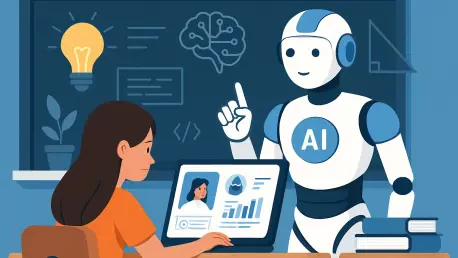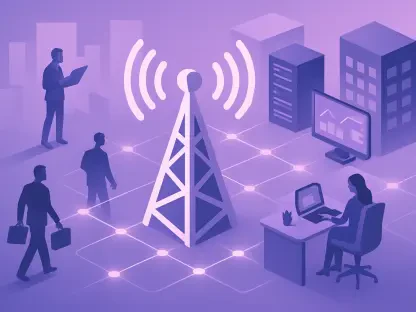The U.S. education system stands at a pivotal moment, where the convergence of artificial intelligence (AI), substantial federal funding proposals, and significant policy changes are redefining the future for students, teachers, and administrators across the nation. As technology promises to revolutionize classrooms with personalized learning tools, debates over how to allocate billions in federal budgets intensify, reflecting deep divisions on the role of government in education. Meanwhile, policy shifts around diversity initiatives and school choice are stirring tensions, challenging long-standing norms and raising questions about equity and access. From the emotional weight of school closures to the innovative potential of student-led programs, the landscape is marked by both opportunity and uncertainty. This exploration delves into the latest developments shaping schools, unpacking the complexities of integrating cutting-edge tools while addressing systemic challenges that impact communities nationwide. Let’s navigate the critical issues driving change and the tough decisions ahead.
Technology as a Classroom Game-Changer
The rise of AI in education is capturing attention as a transformative force, with the U.S. Department of Education championing its potential through targeted federal grants and structured guidance. A recent directive from Secretary Linda McMahon emphasizes using AI to enhance curriculum resources, deliver personalized tutoring, and streamline college and career counseling for students. The focus is on ensuring these tools are educator-driven, meaning teachers remain at the helm of implementation to align technology with classroom needs. Ethical considerations are paramount, with strict mandates ensuring that AI applications adhere to data privacy laws and prioritize student safety. This approach reflects a broader commitment to harnessing innovation while mitigating risks, positioning technology as a partner rather than a replacement for human instruction in schools.
Beyond the promise of tailored learning experiences, the Department of Education has outlined key principles to govern AI’s integration, addressing concerns about equity and transparency. Accessibility stands as a core pillar, ensuring students with disabilities can fully engage with these digital tools without being left behind. Transparency in how AI systems operate and make decisions is equally critical, as is compliance with federal regulations to protect sensitive student information. This cautious yet forward-thinking stance acknowledges the potential pitfalls of rapid tech adoption, such as unintended biases or privacy breaches. By setting these guardrails, policymakers aim to foster trust among educators and parents, ensuring that the benefits of AI—such as improved learning outcomes—are realized without compromising fairness or security in educational environments.
Budget Battles and Regulatory Reforms
On the financial front, a proposed $79 billion budget for the Education Department in 2026 has emerged as a focal point, with the U.S. Senate Appropriations Committee securing bipartisan support in a decisive 26-3 vote. This substantial allocation aims to preserve cornerstone programs like Title I, which supports low-income schools, and special education services, shielding them from proposed restructurings by the Trump administration that would shift oversight elsewhere. The budget proposal underscores a commitment to maintaining federal influence over key educational priorities, even as it sparks debate about the balance of power between national and state authorities. This financial framework signals an intent to bolster resources for schools grappling with diverse challenges, from underfunding to evolving student needs.
Alongside funding, policy flexibility is gaining traction as the Education Department encourages states to pursue waivers under the Elementary and Secondary Education Act (ESEA), a law rooted in addressing educational disparities. These waivers are designed to ease bureaucratic constraints, granting states greater leeway in how they allocate resources and design programs to meet local demands. This push for autonomy reflects a recognition that one-size-fits-all federal mandates may not always suit the unique contexts of individual districts. However, it also raises questions about accountability, as reduced oversight could lead to uneven outcomes across regions. The interplay between this proposed budget and regulatory relief highlights a nuanced struggle to empower schools while ensuring that federal goals for equity and quality remain intact.
Navigating Controversial Policy Changes
Policy shifts are reshaping the educational landscape, with the Department of Justice issuing new guidance that tightens scrutiny on diversity, equity, and inclusion (DEI) practices in hiring and student initiatives. Certain actions, such as inquiring about candidates’ cultural backgrounds or targeting recruitment from specific demographics, are now flagged as potentially unlawful, signaling a rollback of efforts to promote inclusivity in schools. This development has sparked concern among educators who view DEI as essential to addressing systemic inequities, while others argue it aligns with a broader push for neutrality in public institutions. The resulting tension underscores a deeper cultural divide, with implications for how schools foster environments that reflect diverse student populations.
In parallel, the expansion of private school choice programs is altering enrollment dynamics, as participation has surged by 40% in a single year, reaching over 805,000 students. Fueled by both federal and state-level initiatives, including a new bill promoting voucher options, this trend is placing significant strain on public schools, where declining enrollment threatens funding and long-term viability. Critics warn that diverting resources to private options could exacerbate disparities, particularly for under-resourced districts, while supporters highlight the value of parental choice in education. This growing shift toward privatization poses critical questions about the future of public education, as policymakers grapple with balancing individual freedoms against the collective need for a robust, equitable system.
Tackling Systemic Operational Hurdles
Districts nationwide are wrestling with operational challenges that strike at the heart of educational stability, including the difficult decision to close schools due to aging infrastructure, shrinking budgets, and changing demographics. These closures often carry profound emotional consequences, as schools frequently serve as cultural and historical anchors for communities, making their loss deeply felt. Administrators face the daunting task of weighing fiscal necessities against the social fabric of neighborhoods, often with limited community consensus on the best path forward. The complexity of these decisions is compounded by the need to maintain educational quality while managing declining resources, highlighting a systemic issue that demands innovative solutions beyond temporary fixes.
Another pressing concern is the growing reliance on uncertified teachers, particularly evident in Texas, where such educators now account for 12% of the workforce, a sharp increase over recent years. A new state law targets phasing out uncertified staff in core subjects by the end of this decade, aiming to elevate teaching standards amid quality concerns. Meanwhile, bright spots of innovation emerge, such as a student-led media and public relations program at an Indiana high school, which equips learners with practical skills in communication and addresses resource gaps. These operational struggles, from staffing shortages to infrastructure dilemmas, reflect broader challenges of funding and prioritization, underscoring the need for strategic planning to ensure schools remain effective and responsive to community needs.
Reflecting on a Path Forward
Looking back, the journey through these educational developments reveals a system navigating a delicate balance between embracing technological advancements and addressing deep-rooted structural issues. The cautious optimism around AI integration stands out, as does the bipartisan resolve to secure substantial funding despite political headwinds. Policy shifts, whether tightening DEI guidelines or expanding school choice, stir debates that echo broader societal divides, while operational struggles like closures and teacher shortages lay bare the human cost of systemic constraints.
Moving ahead, stakeholders must prioritize collaborative strategies that bridge innovation with equity, ensuring AI tools are accessible to all students while safeguarding privacy. Federal and state leaders should refine funding models to stabilize public schools amid rising privatization and invest in teacher certification programs to address quality gaps. By fostering dialogue between communities and administrators, especially on tough decisions like closures, the education system can chart a sustainable course that honors both progress and tradition.









